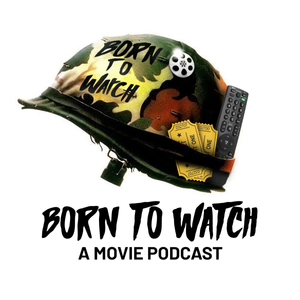
In the pantheon of post-apocalyptic cinema, few films have achieved the iconic status of George Miller's Mad Max 2: The Road Warrior. Released in 1981, this Australian action masterpiece solidified Mel Gibson's status as a global star and redefined the genre with its raw, kinetic energy and visionary storytelling. For this week's episode of Born to Watch, we delve deep into why The Road Warrior remains a timeless classic, resonating with audiences over four decades later.
Cinematic Brilliance and World-Building
From the opening frames, The Road Warrior immerses viewers in a desolate, dystopian future where civilisation has collapsed and survival is a brutal battle. The film's cinematography, spearheaded by Dean Semler, captures the stark beauty and harshness of the Australian outback, transforming it into a hauntingly plausible post-apocalyptic wasteland. The wide, sweeping shots of barren landscapes contrast with the intense, close-up action sequences, creating a visually compelling narrative that keeps viewers on the edge of their seats.
George Miller's direction is nothing short of visionary. He crafts a world that is both alien and eerily familiar, where the collapse of society has led to a regression into primitive tribalism. The attention to detail in the set design, costumes, and vehicles helps build a universe that feels lived-in and believable. The modified cars and motorbikes, adorned with spikes and armour, have become iconic symbols of the film, representing the resourcefulness and desperation of the world’s inhabitants.
Storytelling and Themes
At its core, The Road Warrior is a story about survival and redemption. Max Rockatansky, portrayed with stoic intensity by Mel Gibson, is a lone wanderer haunted by the loss of his family and former life. Max's journey is one of reluctant heroism; he is initially driven solely by self-preservation but gradually finds a purpose in helping a group of settlers defend their precious fuel supply from a marauding band of savages.
The narrative is straightforward yet profound, exploring isolation, community, and the enduring human spirit. The settlers, led by the charismatic Pappagallo (Michael Preston), represent a glimmer of hope and civilisation amidst the chaos. Their struggle to protect their oil refinery from the barbaric Humungus (Kjell Nilsson) and his gang is a microcosm of the fight to preserve humanity's better nature in the face of annihilation.
Character Development and Performances
Mel Gibson's portrayal of Max is a masterclass in understated performance. With minimal dialogue, Gibson conveys a depth of emotion through his physicality and expressions. Max is a man of few words, but his actions speak volumes, making him an enigmatic and compelling protagonist. His evolution from a hardened survivor to a reluctant saviour is subtly yet powerfully executed.
The film's antagonists are equally memorable. The Humungus, with his menacing presence and grotesque mask, is a formidable villain whose very appearance strikes fear. Vernon Wells, as Wez, the psychotic henchman, delivers a terrifying and mesmerising performance. His raw, unhinged energy epitomises the savage brutality of the film's antagonistic forces.
The supporting cast adds depth and variety to the narrative, including the feisty and resourceful Feral Kid (Emil Minty) and the determined Warrior Woman (Virginia Hey). No matter how minor, each character contributes to the film's rich tapestry, making the world feel populated and real.
Action and Choreography
One of the most celebrated aspects of The Road Warrior is its groundbreaking action sequences. The film is renowned for its spectacular car chases and stunts, which remain some of the most thrilling ever captured on film. The climactic chase scene, in which Max drives a heavily armoured tanker while pursued by Humungus's gang, is a masterclass in action filmmaking. The sequence is meticulously choreographed, combining practical effects, real stunts, and dynamic camera work to create a visceral and exhilarating experience.
Miller's decision to use practical effects and real vehicles lends authenticity to the action that CGI-heavy modern films often lack. The stunts are dangerous and daring, performed by skilled stuntmen who risked life and limb to achieve the film's breathtaking sequences. This commitment to practical effects enhances the film's gritty realism and keeps viewers engaged in the high-stakes drama.
Cultural Impact and Legacy
The Road Warrior has left an indelible mark on popular culture. Its influence can be seen in countless films, TV shows, and video games that draw inspiration from its post-apocalyptic aesthetic and action-packed narrative. The film's success helped to popularise the gen...
06/04/24 • 125 min
Generate a badge
Get a badge for your website that links back to this episode
<a href="https://goodpods.com/podcasts/born-to-watch-a-movie-podcast-426066/mad-max-2-the-road-warrior-58686867"> <img src="https://storage.googleapis.com/goodpods-images-bucket/badges/generic-badge-1.svg" alt="listen to mad max 2: the road warrior on goodpods" style="width: 225px" /> </a>
Copy